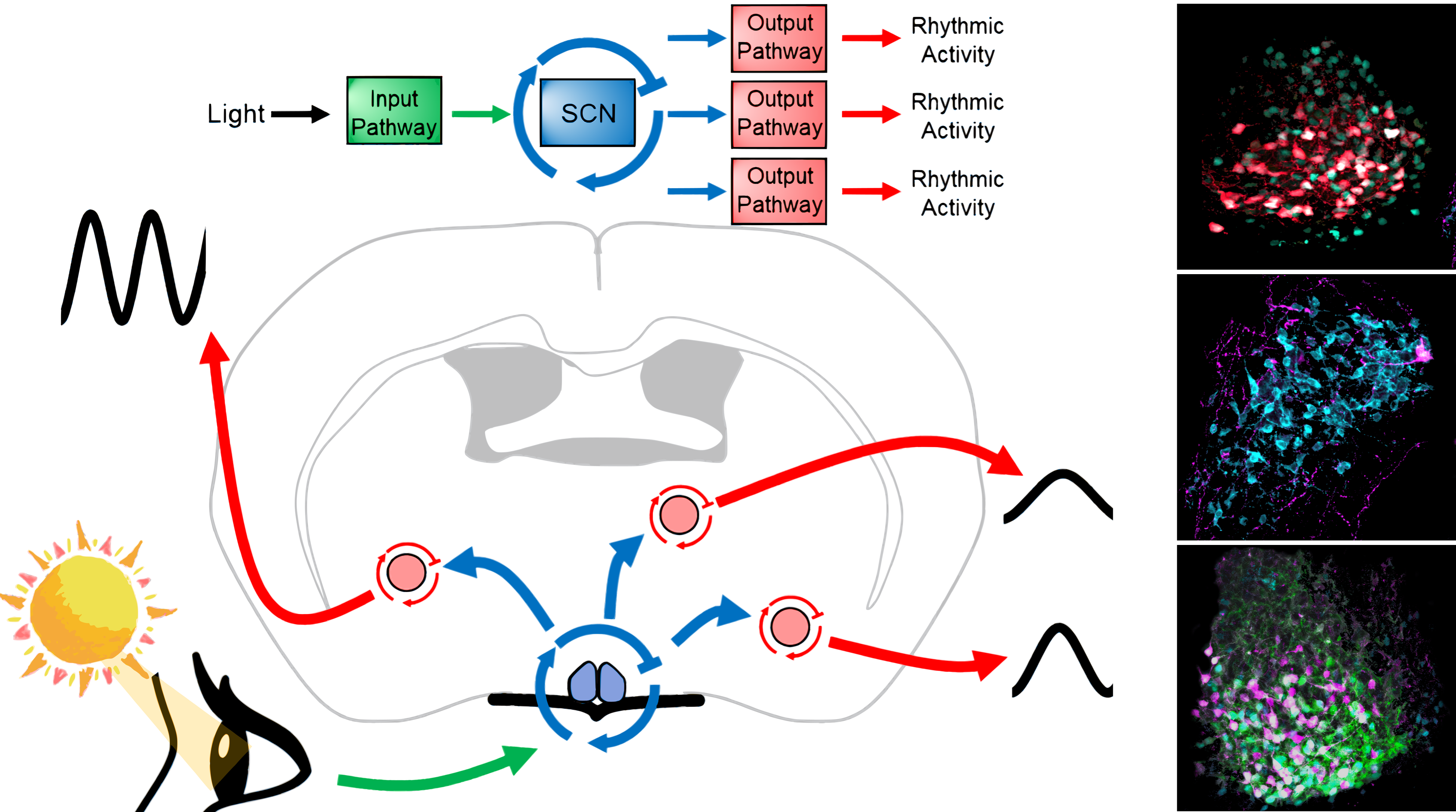Organisms have evolved endogenous circadian (~24 h) rhythms to anticipate reliable daily events such as the light cycle. These rhythms are synchronized to local time by the master circadian pacemaker, the suprachiasmatic nucleus (SCN). The SCN, with its well-defined inputs (light) and reliable outputs (daily rhythms) is a uniquely advantageous model in which to investigate the fundamental neuroscience question of how genes, neurons, and circuits interact to influence behavior and physiology.
Dissecting the circuits that regulate circadian rhythms is also crucial to understand how their disruption contributes to disease including metabolic, cardiovascular, and mood disorders. Determining the coding strategies of these circuits will inform experiments investigating the circuit basis of circadian dysfunction that both leads to, and is a symptom of, disease.
The overarching research goal of the Jones Lab is to understand how circadian output from the SCN is encoded by downstream neurons to ultimately generate diverse behavioral and physiological rhythms with different phases and waveforms. We aim to answer critical questions including:
- Does SCN firing induce or shift circadian gene expression and firing in (subsets of) target neurons?
- Do these neurons encode daily timing signals from different SCN neuron types?
- How do these neurons integrate circadian input with signals from other brain regions?
- And, ultimately, how do rhythms in these neurons regulate circadian outputs?
